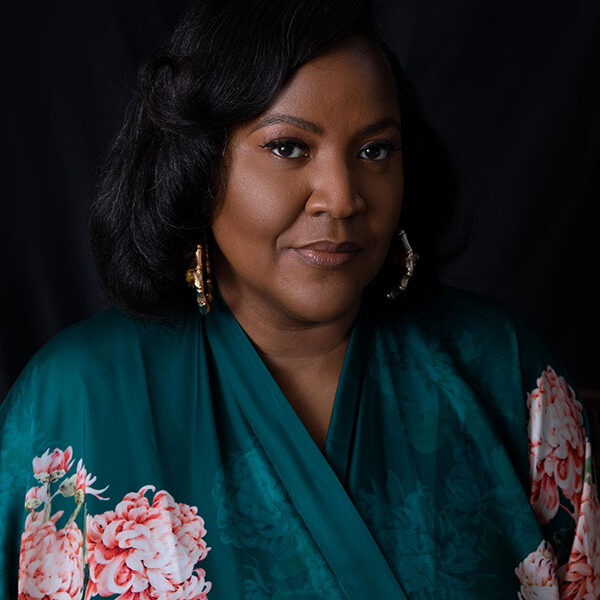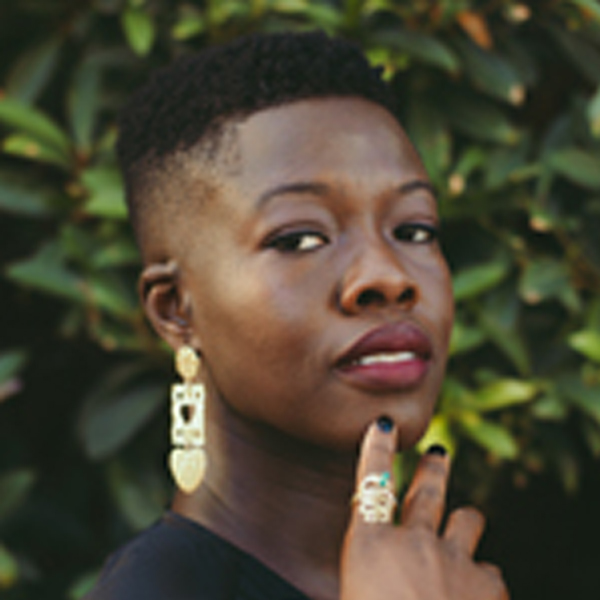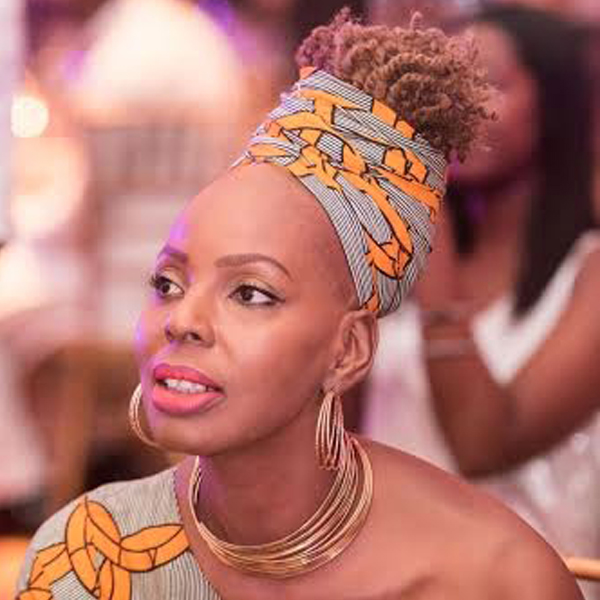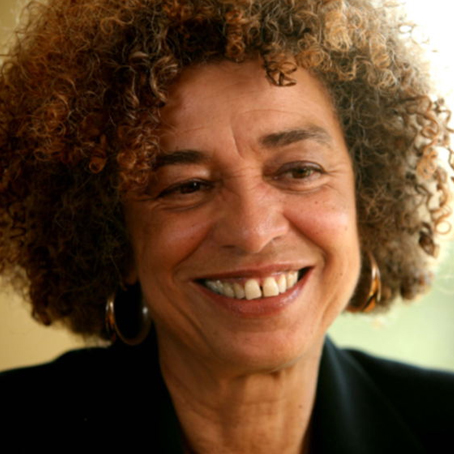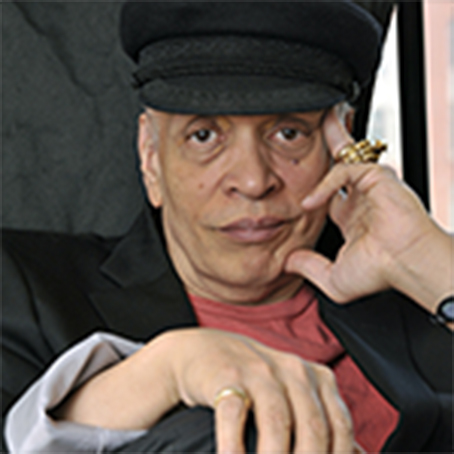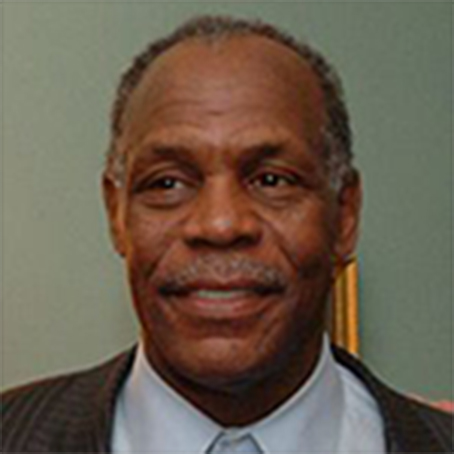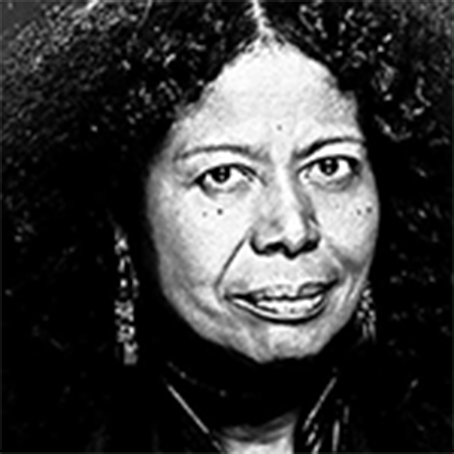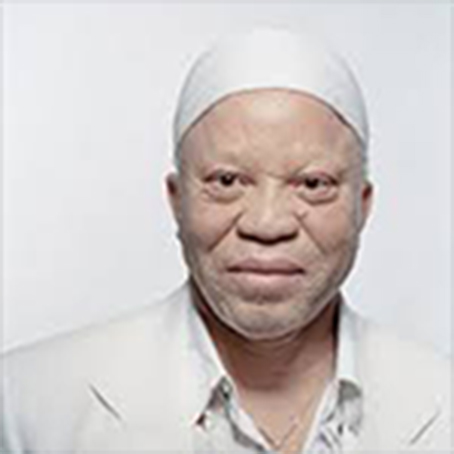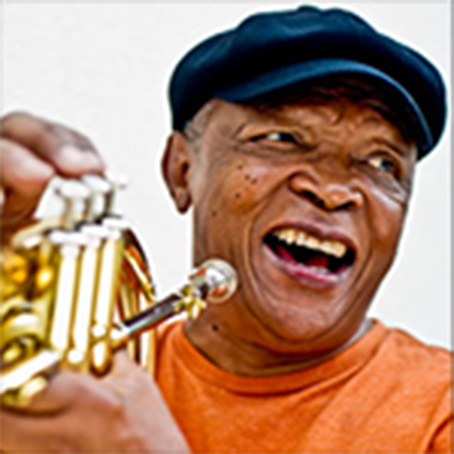
dream hampton Fall 2025
dream hampton is an award-winning filmmaker and writer from Detroit.
For three decades her essays and cultural criticism helped shape a generation. Her most recent works include the award winning short film “Freshwater” (NYT OpDocs/PBS, 2023) and “Ladies First” (Netflix, 2023). In 2019 she was showrunner and Executive Producer of the Emmy nominated docuseries, “Surviving R. Kelly” (Netflix), which broke ratings records and earned her a Peabody Award. That year she was named one of TIME 100’s most influential people in the world.
Interview by Dr. Joan Morgan
Edited by Kristen Cornwall
Hailing from Detroit, Michigan, dream hampton found her way to the energetic campus of NYU in the late 90s to attend the prestigious Tisch School of the Arts. dream hampton has made more than a name for herself as an iconic, award-winning filmmaker and writer. Across her three-decade career, hampton has become legendary in the music journalism sphere, her essays and sharp observations leading a generation to see themselves with greater clarity—through music, writing, and film.
Her recent work includes the award-winning short film Freshwater (NYT OpDocs/PBS, 2023) and Ladies First (Netflix, 2023). Among her selected films are Treasure (Frameline, 2015), Finding Justice (BET, 2019), It’s A Hard Truth, Ain’t It (HBO, 2019), and the Emmy-nominated Surviving R. Kelly (Netflix, 2019), which broke ratings records and won a Peabody Award. That same year, TIME named hampton one of the 100 most influential people in the world.
On September 16th, 2025, the Center for Black Visual Culture is honored to welcome dream hampton as our Fall 2025 Artist-Scholar in Residence. In advance of her residency, our Director, Dr. Joan Morgan, sat with hampton to discuss her new and upcoming works, her approach to art collecting, and her connection to the visual arts.
Joan Morgan (JM): So, first of all, welcome to CBVC. We're so excited about your residency.
dream hampton (dh): I'm so excited. New York is one of my homes, and I love the work of Deborah Willis and the whole team, including yourself have been doing. Thank you for this invitation,
JM: We're very happy to have you, particularly at this point because it sounds as though you have various new bodies of work that you want to engage in and… I don't know if it's spreading wings, but expanding your various practices. What are you interested in working on during your residency, and what are you working on now?
dh: During my residency, I have a long-standing project that I can't wait to get into the archives and have that larger NYU Bobst library access. I was an NYU student in the early 90s, at the Tisch School of the Arts. Fought to have Africana studies, actually. I was a part of the undergrad representative that was demanding. I actually looked at Manthia Diawara's CV to bring him on. I was a part of the committee! It's so funny! Wow.
dh: I'm always so shy about talking about upcoming projects, but one of them involves getting into an NYPD archive and papers that I'm hoping I can see there. I'm looking at the late 70s, early 80s. When there was a lot of activity with folks that I consider mentors and who are passing away, I'm thinking about that Black Liberation Army generation. I'm also thinking about the iconography of them, you know? You and I, Joan, visited the exhibit, Interiority, here. You wanted to see Deb Willis' work, of course, so did I. Our friend, our great friend, Lyle Ashton Harris, had some pieces up, Ayanna V. Jackson. As I think about the iconography of the Black power movement, and I know people think about it as the late 60s, but I am looking at a later period when the Panthers had disintegrated.
dh: Particularly at some of the arrests that were made in Nyack. I can't wait to get into some of those photographs and trial photographs. So those are some of the things I'm looking at. I'm also doing a collaboration with Mickalene Thomas. I guess, Ford Foundation will announce it soon, but in that project I received a grant. It's called All About Love: The Letters of bell hooks. And Mickalene Thomas, who, of course, I saw, her All About Love exhibition at the Broad Contemporary Museum of Art. She, Darnell Moore, and I were in conversation at the Broad when it was there, and she agreed to help me animate and bring some of these letters to life with her own artwork.
As their discussion progressed, Dr. Morgan's interest went from dream hampton, the filmmaker and writer, to another aspect of her creative life—her profound and lasting affinity with visual art. Far from a passing interest, hampton has long been surrounded by works that move her, collecting works, and supporting artists with the same zeal she does with film and literature. In this moment, she also reflects on the work of her friends and what it meant to survive in New York City as a young adult, where art and community were inseparable. Dr. Morgan asked her to consider how her passion influences her practice, as well as the function that art plays in her workspace and way of life.
JM: One of the things that people don't really know about you, dream hampton, the filmmaker, and writer, is that you have a long, very deep and passionate connection to visual art.
dh: Fair.
JM: You're a collector. You're a Biennale enthusiast. I've known you always to work surrounded by art, but pieces that you love. How do you feel that particular passion informs your work?
dh: I'm trying to manifest, just cast some spells on myself around some work. I bought, in an auction, a letter that Lorraine Hansberry wrote to Samuel Goldwyn, excited about the adaptation of her play, A Raisin in the Sun, into a film with Sydney Poitier. So I was accessing her energy, I'm in a place now, Martha's Vineyard, that is not unlike where she retreated to in upstate New York. Of course, she's my Midwestern sister from Chicago, and was this writer, who was playing around with Hollywood like so many writers were back in the day, and still do. Thank you for saying that, Joan, and thank you for knowing me and seeing me.
dh: It's been such a joy to witness each other's lives over the past 30 years. But, you know, there was a moment, I guess now it's almost 10 years ago, when our good friend Greg Tate was still alive, and I remember, Kerry James Marshall had just done the artwork for Porgy and Bess at Lincoln Center. And I remember when Kerry was struggling to pay rent, AJ (Arthur Jaffa) and Kerry were good friends, and we always had a floating $1,000, me, Greg, and AJ. You know what I mean?
JM: I love that. For anyone who doesn't know, that means that you loan it to someone else, and at some point, someone else is gonna loan it to you, and it just keeps circulating.
dh: Yes, rent, tuition payments, I mean, you know, it's the only way you can survive in New York, is that kind of cooperative economics, or as the kids call it now, mutual aid. I'm sure it was called that back when there were rent parties, right? I remember when Kerry was not known, and was not selling for what he's selling for now. In fact, I remember Jack Shainman sold one of AJ's Kerry pieces when AJ was in a bind, and it sold for so much money that it was a reset, not just for Kerry, but other artists as well.
dh: When the Zeitz MOCAA opened, I couldn't believe what a great permanent collection they had that didn't just include the David Hammons’ and the people that we know, the Betye Saar’s, the Ed Clark’s, it had all of the African artists on the continent, too, as a part of their permanent collection, so if you ever get to Cape Town, that's a joy. But so, just watching this shift where Black visual artists are occupying so much space is amazing. And I guess I'm a collector. I have four Ed Clarks, so when I get a check, a big check, I'm more likely to buy art than anything else. I just bought some Carrie Mae Weems prints. Same with Simone Leigh, she had a flash sale on some photography that she'd done, and it was so great to get that in my collection.
From there, the conversation moved to the question of access – how to begin building a relationship with art when the idea of collecting feels out of reach. Dr. Morgan remembered the sage advice hampton had given her when they were young: "buy the ticket,” a catchphrase about taking chances, being dedicated, and having faith. In keeping with that, hampton encourages young artists and aspiring collectors who are intimidated by the expense to begin with what is closest to them: friends, peers, the community, and the artwork that is already all around them. What follows is an open discussion about how to invest in creativity without being subject to market volatility or gatekeeping.
JM: I remember asking you when we were both very young, because I just couldn't believe how much you traveled, and we were freelance artists, I was like, “dream, how do you do it?” And your answer was so simple, but I bookmarked it, and it changed everything for me. You said you buy the ticket, because once you buy the ticket, you kind of have to figure everything else out. What would you say to the young person who really loves art and wants to invest in art, but the idea of being a collector just seems, financially for them, so far away? Or not even a young person, that's a lot of people.
dh: Look around to your friends. My friend John Gray, who founded Ghetto Gastro, has this beautiful practice of citation, which I think is a Black feminist principle, so, so glad to see a brother doing it. We look at Gen X, and even sometimes older, but also look around you. I think of seminal moments in my life, and I like taking in art, and it could be writing, it could be your piece from Indiana on Mike Tyson, your review of Ice Cube's solo album. Again, being okay with the print. I know Mickalene, but I can't afford Mickalene. I, you know, grad school, at this point, you're seeing people's grad school prices look like pro prices, because galleries are already up on grad students, right? But look around at your friend group. And also, don't be too cool to go on Artsy. Through your work with Young Arts Miami, you were telling me that you can buy into curated pieces. Tell me about that.
JM: Well, our artists exhibit every year in Miami, I would say for the last 4 or 5 years, I purchase a piece from one of the young artists, or two. That's my general practice in buying art. I don't really involve myself so much with where's this person in the market. For me, it's in terms of appreciation and I have in my home art that I really love. One of the things that I've learned is just to ask questions that I would have been too shy to ask about. Go into a gallery, ask about payment plans. They don’t to outright offer you that, but you can ask about it.
dh: I mean, my friend Mario Moore, he himself is an amazing visual artist. He has this Malcolm from Malcolm's Centennial. He created this mini bronze statue, and Mario is gonna let me put it on layaway! I'm so happy about that.
JM: You called it layaway, which is, like, the oldest, the blackest thing ever. So if Black people need a cultural translation, it's layaway.
dh: In my 20s, when all I could afford was a catalog, and these catalogs become super valuable. I have Kellie Jones' South of Pico book she did on Central Ave and Black artists in LA in the 60s and 70s. I bought it at the exhibit. It was probably a lot of money that day, like $60. Do I want sushi, or do I want Kellie's book, right? You don't think these exhibits are gonna be these rare, vaporous things, but they only exist in a time and space. I was with MoMA this year in the piece on Black Dandies. I was remembering my last big MoMA moment when I went to see the Alexander McQueen exhibit, the year that they honored him after he had died by suicide, and the lines they went all the way into the park. I couldn't afford a McQueen gown but that day, I could afford the catalog after standing in line for 3 hours. The other thing you can ask about is rare prints. When they have those shows, they'll do a limited number of prints, so I got Kerry James Marshall, the bride and groom of Frankenstein in the gift shop.
JM: Yeah, I think those are important things for people to know, because it often seems intimidating and foreign for us, but you have to get rid of an inch of shyness or embarrassment, and I think I actually am learning a lot. My son is so comfortable in gallery space that it was just really surprising to me. There's a gallery near Saks Fifth Avenue. I have passed that gallery, many times for years, and never thought about going in. And here's my son on a visit home saying “Mom, let's go in.” I try the door, it’s locked, and he says, “no, Mom, the guy's gonna buzz us in.” I just watched him take over, exchange names, and it turned out there were pieces in there that if I was interested in buying were quite affordable. I just assumed, given its real estate, its proximity to Saks on 5th, and being a girl who grew up in the South Bronx in New York, it never dawned on me that it was a space to enter. And here comes my child, who wanted to buy his first Murakami at 16.
dh: It doesn't occur to him that there's some electric dog fence around these spaces. And it's because of all the work that has been done by people like Kellie Jones and Thelma Golden and Linda Goode Bryant. The work of decolonizing these spaces continues. I got involved with the New Museum through the wonderful Karen Wong who was leading their community work and launched this program called Idea City that began in Detroit and went to other places. Because of our relationship, I went to Detroit with her, New Orleans, and Athens. She invited me to be on the committee to welcome for the dinner and the reception for Chris Ofili’s Retrospective at the New Museum. When Karen walked me through tears started coming down my eyes because I walked into a room and it was painted a grayish-blue, requiring your eyes to adjust. I realized how used to the white wall I was. With all my thinking around space, white space, and blank space, I had a visceral reaction of remembering that there can be something different, and that an artist can actually force you to engage the space differently. Not everyone uses the white wall, but I'd become so accustomed to the white wall. That going into the Ofili retrospective at the New Museum a couple of years ago just made me weep.
JM: Thank you, dream. We're so thrilled to have you, and to support your work in any way is such a pleasure for us at CBVC.
dh: I'm so honored, and I get to be in New York and spend time. We're gonna have a few dates, and…well, that's the best part.
dream hampton's reflections on friendship, art, and the communities that have nurtured her serve as a reminder that her work has always been as much about creation as it has been about bearing witness. Always aware of the ways that Black life, love, and art influence one another, she continues to transition between disciplines with clarity and care. As she takes on the role as the Fall 2025 Artist-Scholar-in-Residence at the Center for Black Visual Culture, we welcome you to join us in honoring her presence and vision. The welcome reception will feature remarks from the Center and from hampton herself on September 16, 2025, at 20 Cooper Square, 3rd Floor, from 6:00–7:30 pm. It promises to be an evening that honors both her journey and the communities that continue to inspire it.



